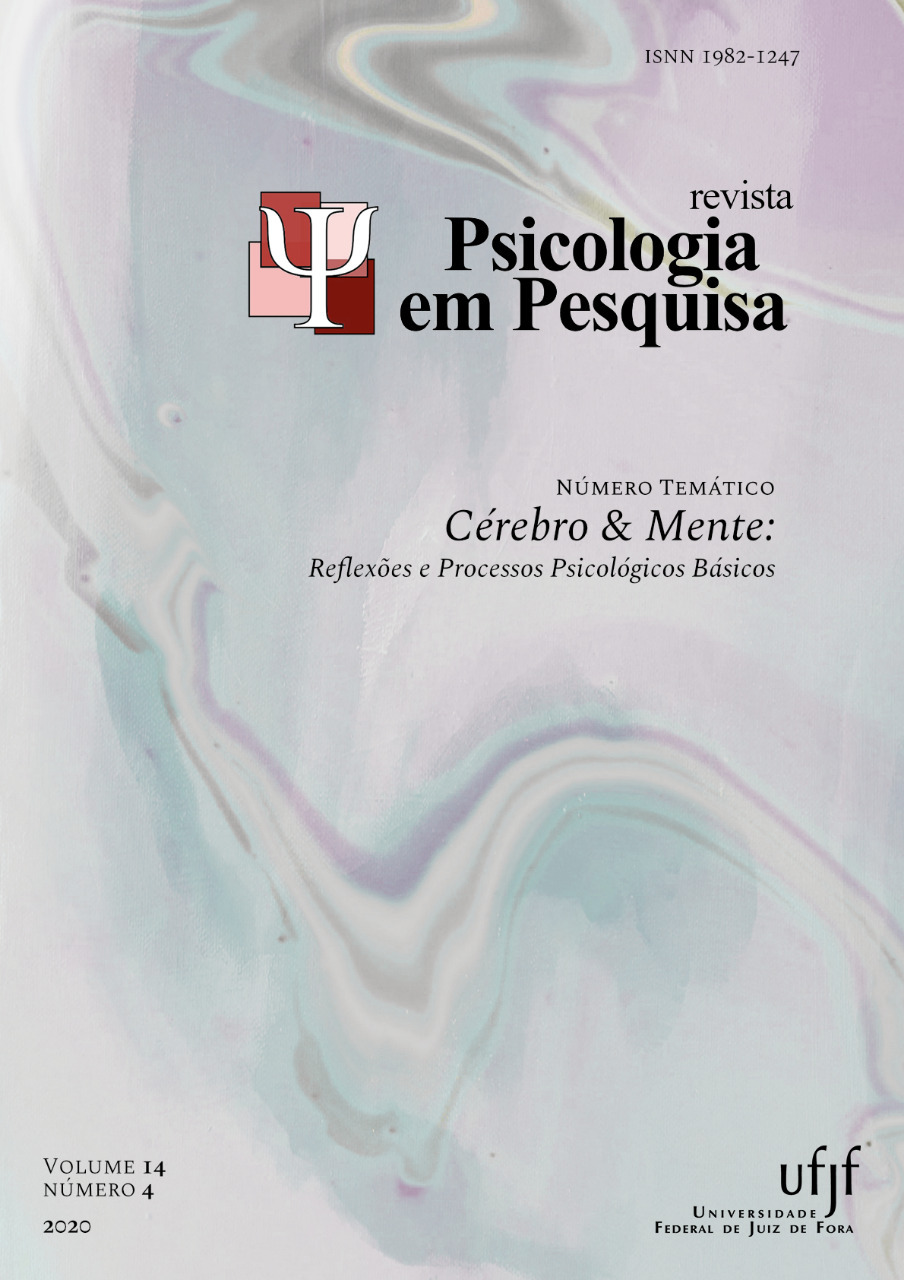The importance of contours for visual object recognition and discrimination
DOI:
https://doi.org/10.34019/1982-1247.2020.v14.32263Resumo
In contrast to many machine vision systems, we human observers can readily recognize solid objects and visually discriminate their 3-D shapes even under changes in viewpoint and variations in object orientation and lighting. While the importance of binocular disparity has been known since the 1830's, the importance and perceptual informativeness of visual contours for object recognition and discrimination is not adequately appreciated. This article will review those scientific contributions that demonstrate that visual contours and their deformations over time (in response to object or observer motion) carry as much or more information about object shape than other forms of visual information.
Downloads
Referências
De Winter, J., & Wagemans, J. (2008). The awakening of Attneave's sleeping cat: Identification of everyday objects on the basis of straight-line versions of outlines. Perception, 37, 245-270. doi: 10.1068/p5429
Hilbert, D., & Cohn-Vossen, S. (1983). Geometry and the imagination. New York: Chelsea.
Kennedy, J. M. (1974). A psychology of picture perception: Images and information. San Francisco, CA: Jossey-Bass.
Koenderink, J. J. (1984a). The internal representation of solid shape and visual exploration. In L. Spillmann & B. R. Wooten (Eds.), Sensory Experience, Adaptation, and Perception: Festschrift for Ivo Kohler (pp. 123–142). Hillsdale, NJ: Erlbaum.
Koenderink, J. J. (1984b). What does the occluding contour tell us about solid shape? Perception, 13, 321-330. doi: 10.1068/p130321
Koenderink, J. J. (1990). Solid Shape. Cambridge, MA: MIT Press.
Koenderink, J. J., & van Doorn, A. J. (1992). Surface shape and curvature scales. Image and Vision Computing, 10, 557-564. doi: 10.1016/0262-8856(92)90076-F
Liang, C., & Wong, K. K. (2010). 3D reconstruction using silhouettes from unordered viewpoints. Image and Vision Computing, 28(4), 579-589. doi: 10.1016/j.imavis.2009.09.012
Mendonça, P. R. S., Wong, K. K. and Cipolla, R. (2001). Epipolar geometry from profiles under circular motion. IEEE Transactions on Pattern Analysis and Machine Intelligence, 23(6), 604-616. doi: 10.1109/34.927461
Norman, J. F., Bartholomew, A. N., & Burton, C. L. (2008). Aging preserves the ability to perceive 3-D object shape from static but not deforming boundary contours. Acta Psychologica, 129, 198-207. doi:10.1016/j.actpsy.2008.06.002
Norman, J. F., Dawson, T. E., & Raines, S. R. (2000). The perception and recognition of natural object shape from deforming and static shadows. Perception, 29, 135-148. doi:10.1068/p2994
Norman, J. F., Dukes, J. M., Shapiro, H. K., Sanders, K. N., & Elder, S. N. (2020). Temporal integration in the perception and discrimination of solid shape. Attention, Perception, & Psychophysics. doi: 10.3758/s13414-020-02031-0
Norman, J. F., Lee, Y., Phillips, F., Norman, H. F., Jennings, L. R., & McBride, T. R. (2009). The perception of 3-D shape from shadows cast onto curved surfaces. Acta Psychologica, 131, 1-11. doi:10.1016/j.actpsy.2009.01.007
Norman, J. F., Phillips, F., & Ross, H. E. (2001). Information concentration along the boundary contours of naturally shaped solid objects. Perception, 30, 1285-1294. doi:10.1068/p3272
Norman, J. F., Phillips, F., Cheeseman, J. R., Thomason, K. E., Ronning, C., Behari, K., … Lamirande, D. (2016). Perceiving object shape from specular highlight deformation, boundary contour deformation, and active haptic manipulation. PLOS ONE, 11(2): e0149058. doi: 10.1371/journal.pone.0149058
Norman, J. F., & Raines, S. R. (2002). The perception and discrimination of local 3-D surface structure from deforming and disparate boundary contours. Perception & Psychophysics, 64, 1145-1159. doi: 10.3758/BF03194763
Norman, J. F., Todd, J. T., & Orban, G. A. (2004). Perception of three-dimensional shape from specular highlights, deformations of shading, and other types of visual information. Psychological Science, 15, 565-570. doi: 10.1111/j.0956-7976.2004.00720.x
Norman, J. F., Wheeler, S. P., Pedersen, L. E., Shain, L. M., Kinnard, J. D., & Lenoir, J. (2019). The recognition of solid object shape: The importance of inhomogeneity, i-Perception, 10(4), 1–14. doi: 10.1177/2041669519870553
Pollick, F. E., Giblin, P. J., Rycroft, J., and Wilson, L. L. (1992). Human recovery of shape from profiles. Behaviormetrika, 19, 65-79. doi: 10.2333/bhmk.19.65
Snodgrass, J. G., & Vanderwart, M. (1980). A standardized set of 260 pictures: Norms for name agreement, image agreement, familiarity, and visual complexity. Journal of Experimental Psychology: Human Learning and Memory, 6, 174-215. doi: 10.1037/0278-7393.6.2.174
Tse, P. U. (2002). A contour propagation approach to surface filling-in and volume formation. Psychological Review, 109, 91-115. doi: 10.1037/0033-295X.109.1.91
Van Effelterre, T. (1994). Aspect graphs for visual recognition of three-dimensional objects. Perception, 23, 563-582. doi: 10.1068/p230563
Wallach, H., & O'Connell, D. N. (1953). The kinetic depth effect. Journal of Experimental Psychology, 45, 205-217. doi: 10.1037/h0056880
Wagemans, J., De Winter, J., Op de Beeck, H., Ploeger, A., Beckers, T., Vanroose, P (2008). Identification of everyday objects on the basis of silhouette and outline versions. Perception, 37, 207-244. doi: 10.1068/p5825
Wheatstone, C. (1838). Contributions to the physiology of vision -- Part the first. On some remarkable, and hitherto unobserved, phenomena of binocular vision. Philosophical Transactions of the Royal Society of London, 128, 371-394. doi: 10.1098/rstl.1838.0019
Wong, K. K., and Cipolla, R. (2001). Structure and motion from silhouettes. Proceedings of the 8th IEEE International Conference on Computer Vision, 2, 217-222. doi: 10.1109/ICCV.2001.937627















